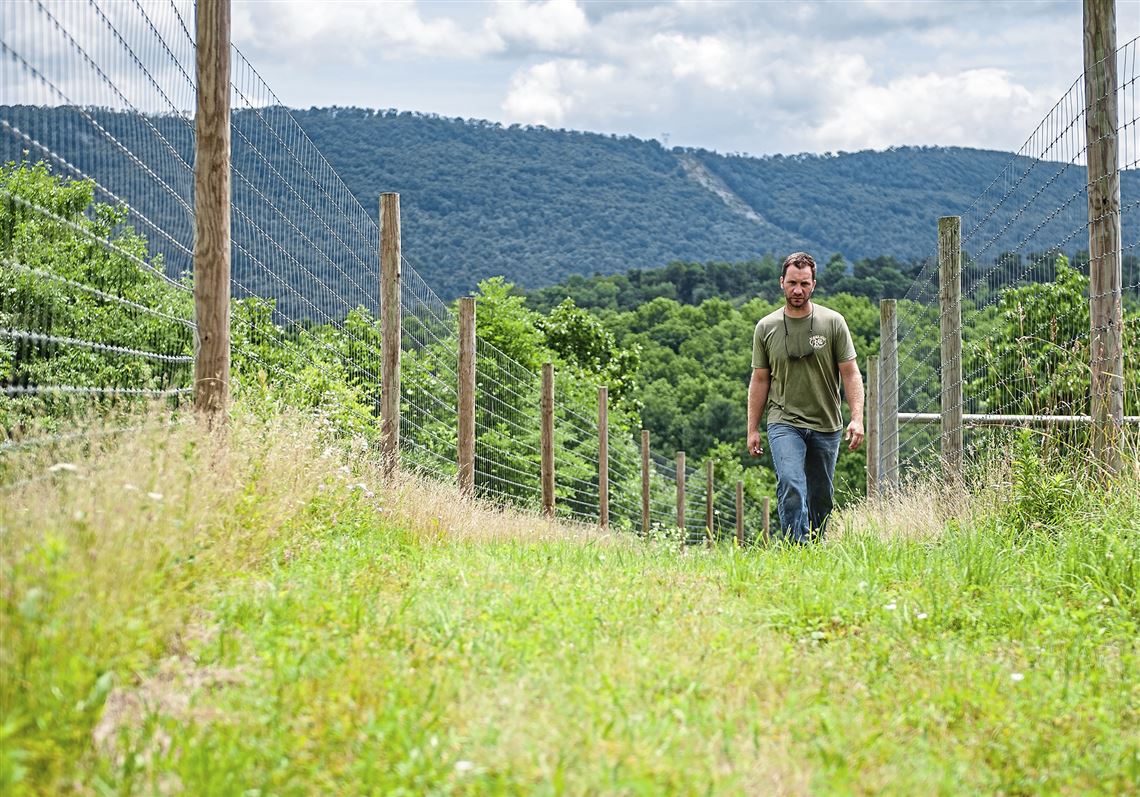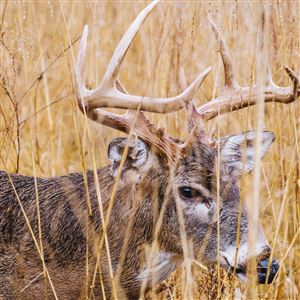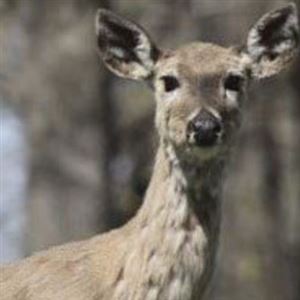HOLLIDAYSBURG, Pa. — The “ridge and valley” region is a beautiful swath of south-central Pennsylvania. Rising out of the Maryland panhandle, it spreads about 80 miles between the Allegheny Front west of Altoona and the Piedmonts east of Harrisburg. For centuries the rolling gap separating the mountain chains has served as a corridor between northern and southern Indian nations, William Penn’s charter and the Virginia colony and Union and Confederate armies during the Civil War.
Now, a new type of warfare is raging through those hills and plains. On one side, the Pennsylvania Game Commission and many of the state’s hunters are losing a war of attrition against a serious deer disease they say has entered free-ranging populations from commercial deer farms in the region. On the other side, deer farmers claim to be economic victims in the war against chronic wasting disease, a little-understood and always-fatal sickness that is killing fenced and free-ranging deer throughout the ridge and valley.
“This is serious. We all know that,” said Jarrid Barry, a Blair County deer farmer and president of the Pennsylvania Deer Farmers Association. Two weeks ago Barry testified before the state House Game and Fisheries Committee on the spread of chronic wasting disease. “We’re frustrated because we’re getting blamed for this. It’s put some of us out of business even though the mapping shows just the opposite — it’s in the wild deer and our deer are getting it inside the fence.”
Originally found on a deer research facility in Colorado in 1969, CWD is a transmissible neurological disorder of deer and similar animals. It carves sponge-like holes in the brains of its victims, similar to mad cow disease in cattle and scrapie in sheep. Not caused by a parasite, bacteria or virus, CWD is the result of an oddly folded protein, or prion, that is resistant to an enzyme that breaks down proteins and peptides. The resistance is transferred when a prion touches a healthy protein.
Chronic wasting disease is completely undetectable in live deer for up to a year before it inevitably causes loss of body condition, disorientation, behavioral abnormalities and death. It is not known how long the prions remain viable, but they’ve been found to be infective for at least a decade after being passed onto the ground by a diseased animal, and can survive tremendously high temperatures. Despite longtime scientific consensus to the contrary, recent research suggests CWD may be transferable to humans who eat the malformed protein.
The disease has been confirmed in 24 states. Since it was detected on an Adams County deer farm in 2012, the Pennsylvania Department of Agriculture, which regulates the deer farming industry, has counted 46 captive deer that tested positive. Those farms were closed by the department, and any farm linked by deer exchanges were subject to quarantine until proven safe. Among free-ranging deer in Pennsylvania, chronic wasting disease recently crossed a transmission threshold, jumping from a total of 25 cases in 2016 to 125 confirmed positives this year. The Game Commission established four disease management areas around those locations (one has been eliminated), where special hunting and deer-handling regulations attempt to control the export of high-risk parts that harbor greater concentrations of prions.
In 2017 the Game Commission’s CWD pointman Wayne Laroche toured the state with a stop in Monroeville. Researchers, he said, have found spotty distribution of CWD in wild deer from the Rocky Mountains to southcentral Pennsylvania, suggesting the disease is radiating out from hotspots near deer farming facilities. Laroche’s presentation included a map showing the locations of CWD cases in the proximity of some of the state’s 860 deer farms, many clustered in the ridge and valley region surrounding Barry’s Powder Ridge Whiltetail Deer Farm.
“I’ve seen that map,” said Barry, during a recent tour of his 30-acre deer breeding facility. “It shows the disease moving up from counties in West Virginia where they’ve had more than 300 cases of CWD in wild deer since 2005, but no cases in deer farms. Up from Maryland where they’ve had about 30 cases of CWD in free-ranging deer and none in farm deer. When you see [on the map] 125 positives in Pennsylvania and 46 in fenced deer facilities, I don’t know how you look at Wayne’s map and see the disease coming out of deer farms.”
Barry’s medium-size family-owned facility started with three bred does in 2007. Now, his 150 deer are raised primarily for sales to hunting preserves and stud service. Through selective breeding, he said, his 3- to 4-year-old bucks grow racks averaging 105 to 120 inches.
Some 3,500 jobs and $103 million in commerce are generated by Pennsylvania deer farms. Those that exchange deer within the state only are required by the Agriculture Department to be enrolled in a herd monitoring program in which CWD testing is performed on 50 percent of their deer that die at more than 1 year of age. Farms that move deer across state lines must have post-mortem CWD tests are performed on every deer that is at least a year old at death. In addition, deer farms involved in interstate commerce are subject to an intensive inventory process and hands on inspections of all deer by independent contractors every three years. Two forms of ID must be placed on every animal, and farms must comply with herd certification program protocols for at least five years before moving an animal out of state.
“Every deer that has tested positive in a captive farm in Pennsylvania was born in Pennsylvania,” said Barry. “There hasn’t been one animal shipped into our state that has tested positive for the disease. So get rid of that idea that we brought it in through an animal shipment, because there’s no evidence to support that.”
He admits it’s more difficult to monitor free-ranging deer, but more could be done, he said, to control the spread of CWD. Barry suspects that one of the main vectors for the disease may be successful hunters who carelessly discard carcasses of infected deer that were killed before showing signs of the CWD.
“Last year was the most mortalities [the Game Commission] ever tested and it was around 2 percent — 8,000 deer out of 300,000 deer shot,” said Barry. “When they find a case, how long was [the disease] there before they found it? Compare that with, behind fences last year in Pennsylvania, 65 percent of all the deer that died were tested for CWD.”
Barry’s enclosure exceeds the requirements of state law with an electric fence and two high fences separated by 8 feet, and his deer are certified for interstate sale. Nevertheless, five years after opening, a wild-deer disease management area was established that coincidentally encompasses the farm. Powder Ridge Whitetails has never had a case of CWD, he said, but special regulations prohibit him from selling his product out of state.
“My business is down, I have to get rid of some of my does,” he said. “To tell you the truth, I’m scared to death. I love deer, but I have deer outside my fences every day that potentially have the disease. One positive and my family business is out of business.”
John Hayes: jhayes@post-gazette.com
First Published: June 29, 2018, 6:23 p.m.



















